ADU Technical Assistance for Homeowners
ADU Goal Supported: Supporting Homeowners to Build ADUs
Overview
This strategy supports homeowners throughout the entire ADU design and development process, while reducing staff time and bolstering process improvements. Building an ADU is often a daunting task for a homeowner as they become developers for the first, and likely only, time in their lives. By providing homeowner education and technical assistance, an ADU Supportive Jurisdiction can help interested residents successfully navigate each step and ensure more ADUs are built.
Benefits
- Educates homeowners on what to expect throughout the entire process, particularly seniors, Colorado’s fastest growing demographic.
- Reduces staff time answering the same questions at the counter.
- Empowers homeowners to know how to navigate local application and permitting processes.
- Ensures more complete applications, reducing staff time on multiple reviews.
- Provides consistent, easily accessible print and digital guidance for staff across departments and at the counter, ensuring customer service is consistent.
- Builds trust between the community and local government by providing complete and thoughtful guidance.
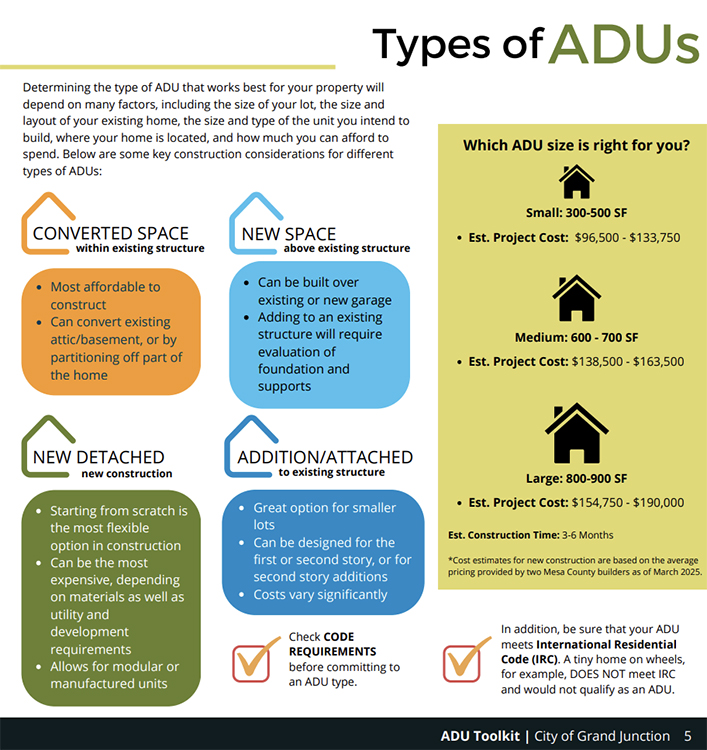
Image Source: City of Grand Junction
- Outline local ADU development process from start to finish, including all required applications, approvals, and review periods. Include all departments and outside agencies involved.
- Consider common hurdles and pain points in the process for homeowners. Ask recent permit applicants, permit counter staff, all departments involved in the process, and outside agencies (utility companies, building departments, school districts, etc.) to understand any issues.
- Determine timelines and dependencies. Are there steps homeowners must complete before others to make the process easier?
- Map out the entire process—from getting started to move-in—including major steps, available resources, contacts for departments and outside agencies, forms, or special circumstances (e.g. snowload requirements, deed restrictions, etc.). Address common hurdles and pain points.
- Develop guidance that helps homeowners navigate the process, focusing on known friction points and frequently asked questions. Any time you can clearly describe a process, connect the dots, provide a checklist, and present information in a visual or interactive format, the more effective it will be. These efforts can take many forms including webpages, publications, workshops or webinars, and tools like a budget calculator or interactive parcel lookup. These are most effective when addressing the entire ADU development process, including what happens before and after interfacing with local government.
Guidance may include the following elements of the homeowner process:- Identifying goals and preferences
- Creating an ADU project budget and researching options for financing
- Researching local laws and what’s possible on your property
- Finding a designer and navigating the design process
- Preparing and submitting permitting applications
- Hiring a contractor and navigating the construction process
- Becoming a landlord and renting out your ADU
- Identify responsibilities and funding for desired resources and/or programs. Make sure you identify who will keep materials updated and how you will help homeowners know resources exist.
- Seek input from those familiar with the ADU process before finalizing materials to make sure guidance is clear, complete and approachable.
- Ensure homeowners are aware of the resources and ADU benefits. Utilize existing communication channels (e.g. city newsletters, utility bill inserts, etc.) as well as local media coverage, targeted mailings and/or presentations to groups like local non-profit organizations working with low and moderate income homeowners, particularly seniors.
- Consider holding a recurring event—annual or quarterly—that walks homeowners through the process and what to expect when building an ADU.
- Identify local homeowners that have built ADUs and ask them to share their experience, which can be the best way to encourage others to build.
Materials require consistent updating to accurately depict requirements, local laws, and updated procedures and standards.
- Determine staff responsibility for keeping materials updated, including a thorough list of all items to be updated.
Staff turnover creates gaps in knowledge about ADU requirements and processes, as well as the existence of Technical Assistance programs and materials.
- Add ADU technical assistance to staff onboarding materials to ensure all new staff know about the materials and where they are.
If only available in one format (e.g., online, in English, at events), material will not have a far reach.
- Make materials available in commonly spoken/read languages and in various formats. For example, older community members are likely more comfortable with printed materials and busy young families are not likely to attend workshops or live sessions.
- Grand Junction: See the Grand Junction case study for more details.
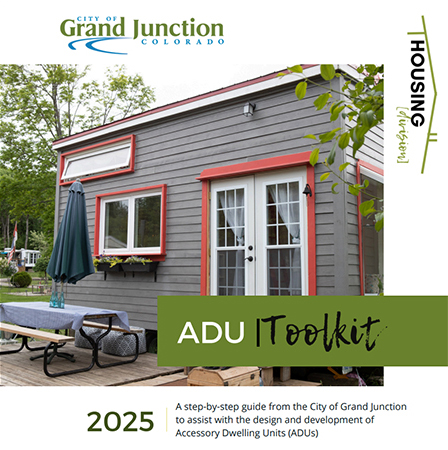
The City’s website offers many helpful and bilingual English/Spanish resources, including:- FAQs and a 10-page ADU Toolkit / Kit de herramientas de ADU providing general information on ADU types, costs, financing, as well as the City of Grand Junction development review process.
- ADU Cost Estimator / Calculadora de costos de ADU and other extra resources located throughout the toolkit which can be accessed by scanning a QR code.
- Quarterly ADU Workshops. Homeowners sign up using a detailed form that gathers helpful information for staff.
- Jefferson County
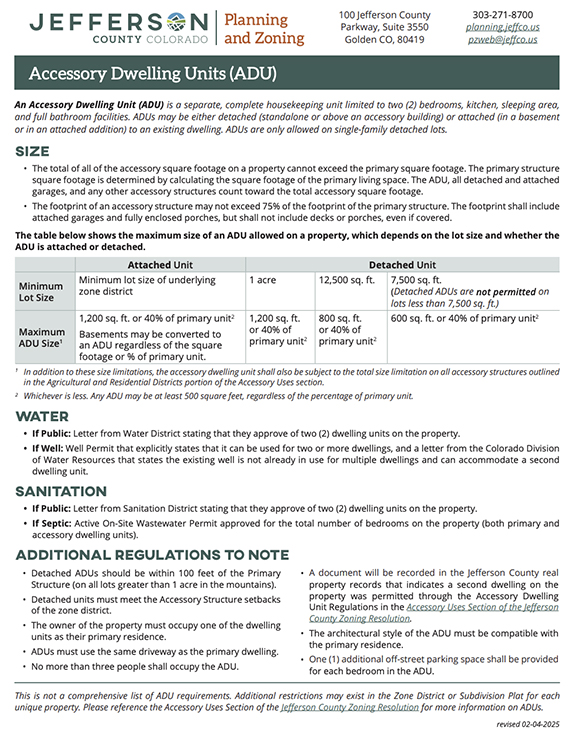
The County provides an extensive set of FAQs online and, notably, a very comprehensive one-page handout with key details about building an ADU. - Boulder: See the Boulder case study for more details.
The City’s ADU website includes helpful information for property owners interested in ADUs. Their ADU Guide webpage provides a helpful step-by-step overview of learning the rules for your property and for the application and review process. - Fort Collins
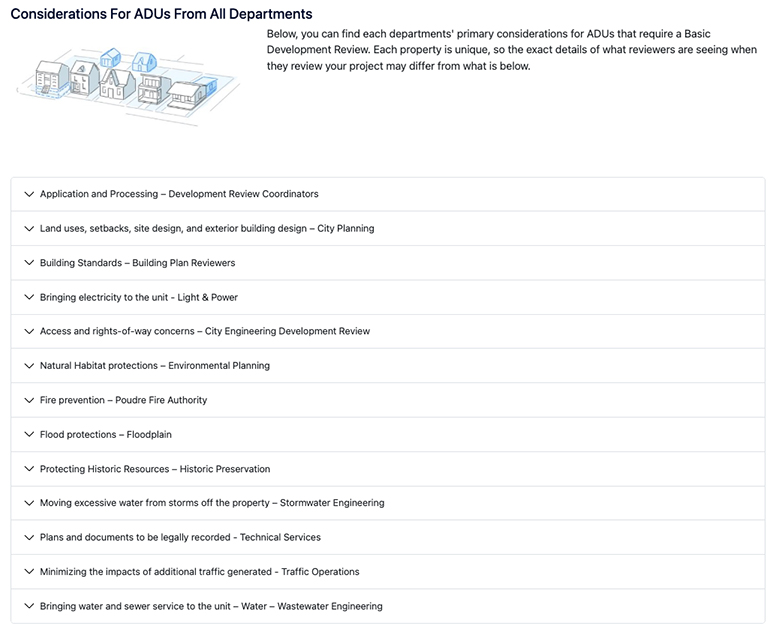
The City of Fort Collins ADU Basic Development Review webpage provides a detailed overview of what various departments and agencies might review in an ADU project application. This unique resource helps homeowners understand what is included in permitting review and the importance of each part of the review. - Lafayette: The City of Lafayette has an attractive and informative three-page handout about building an ADU and various submission requirements.
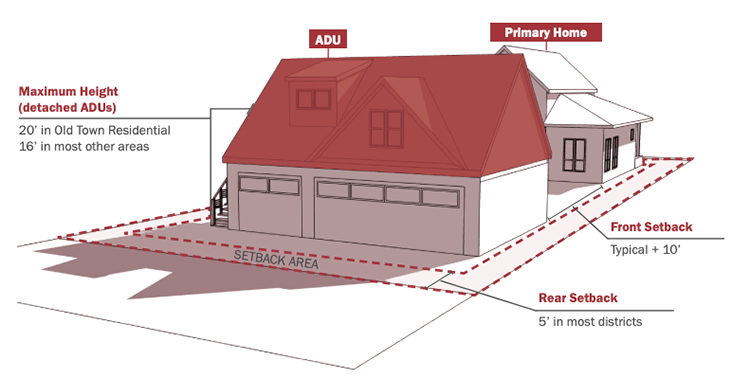
All of the other efforts detailed in this toolkit pair well with homeowner technical assistance. There are opportunities at all points of the ADU planning, development, review, permitting, construction, and move-in process to provide clear, accessible information to homeowners about the programs, policies, and processes used by local government.
Toolkit Resources
- Homeowner TA: Template Slide Deck
- Homeowner TA: Process Graphic Template
- Homeowner TA: Important Information Handout Template
- Homeowner TA: Local ADU Rules Handout Template
- Homeowner TA: Outreach Content – ADU 101
- Homeowner TA: Outreach Content – Meeting with Staff
- Homeowner TA: Outreach Content – Designing Your ADU
- Homeowner TA: Outreach Content – Renting Your ADU
- Homeowner TA: ADU Case Study Interview Questions
Strategy Profiles
Accessory Dwelling Unit (ADU) Toolkit
We're Here to Help!
Do you have questions about the new laws and impacts to your jurisdiction? Check out our FAQ page, visit our main State Land Use and Housing Legislation page to learn about all the laws, or get one-on-one support below: